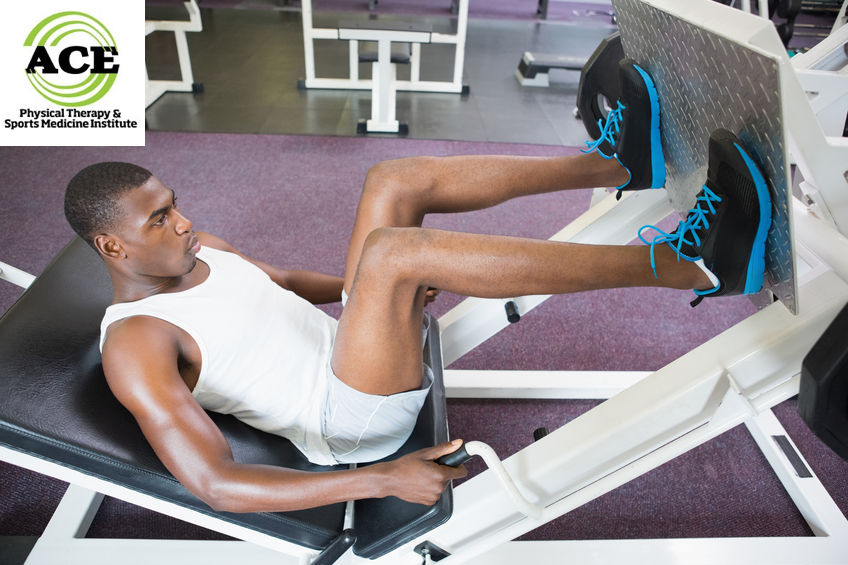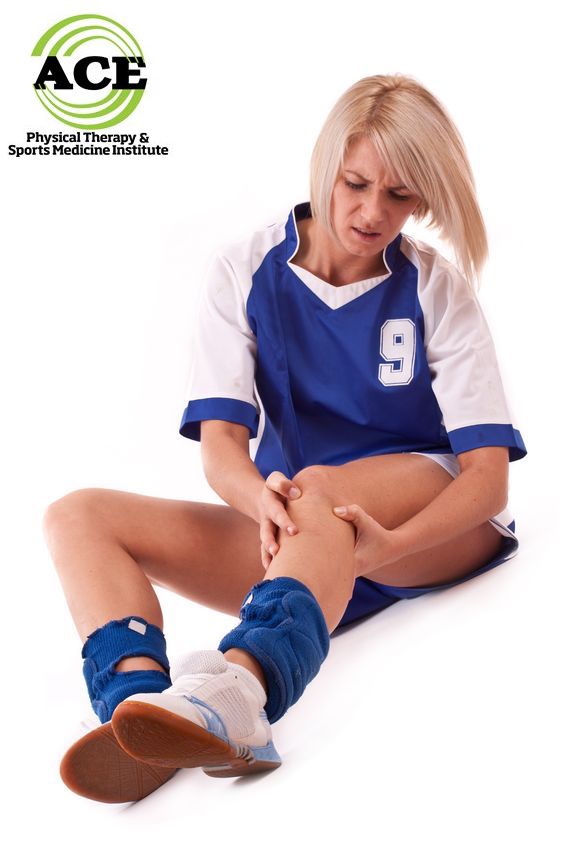QUADRICEPS MUSCLE WEAKNESS FOLLOWING ANTERIOR CRUCIATE LIGAMENT INJURY

Tid Bits of Info
- The goal is to accomplish at least 90% symmetry between quadriceps muscles on the involved and non-involved leg following reconstruction surgery.
- More than 100,000 ACL reconstruction surgeries are performed in the U.S. every year.
- The ACL cannot heal on its own if it is completely ruptured.
- It usually takes 1 year or longer to develop adequate strength in the involved leg.
- Seek the advice and treatment of a Physical Therapist if you suffer a knee injury.
Every day people injure their ACL. In fact, 100,000 to 250,000 ACL injuries occur in the U.S. each year. One minute she jumps and spins to catch the ball and the next minute she is on the floor with a torn ligament. Injuring the Anterior Cruciate Ligament (ACL) can be painful and cause knee swelling and instability. ACL injuries are common in active sports like basketball, soccer, football, skiing, and tennis. ACL reconstruction surgery does not overcome quadriceps muscle weakness, so it is vital to participate in rehabilitation programs that include high-intensity neuromuscular electrical stimulation and perturbation training for strength recovery.
Like most joints in our body, knee joint stability is provided by static and dynamic stabilizers. The quadriceps and hamstrings are considered as major dynamic stabilizers of the knee. Following an ACL injury, the quadriceps and hamstrings muscles, become weak but the quadriceps muscles are more negatively affected. One reason is thought to be associated with the simple fact that 3 out of the 4 quadriceps muscles are single joint muscles. These three muscles control the knee joint, only. Quadriceps and hamstrings weakness can persist when an individual returns to activity after many ACL injuries and especially an ACL reconstruction surgery.
The weakness that is associated with these injuries is believed to be a “reflexive shut-down” as a response of the nervous system to protect the injured joint. There are joint receptors that control the amount of muscle activity surrounding a joint. These receptors rely on sensory information that is present in the joint. The “shut down” is due greatly to the amount of swelling and pain that occurs in the involved knee joint following the injury or surgery. The change in sensory information leads to incomplete and inefficient activation of quadriceps muscles and quadriceps weakness.

Inefficient quadriceps control causes a host of problems for the joint. One, in particular, is joint surface damage due to an increase in joint impact forces during the gait cycle. Biomechanical alterations of knee joint movement counts as a major contributor to developing knee joint osteoarthritis following an ACL injury and/or ACL reconstruction surgery.
Unfortunately, the standard supervised rehabilitation process (usually 3-4 months long) following an ACL reconstruction surgery does not appear to overcome the quadriceps muscle weakness. The asymmetrical quadriceps muscle strength, between the ACL reconstructed knee and the normal limb, affects anyone who has had an ACL surgery: and predisposes them to “early onset post-traumatic osteoarthritis”.
The quadriceps and hamstrings muscles directly contribute to knee joint dynamic stability and developing effective preventative strategies, treatment protocols and determining potential contributing factors to knee joint instability appears to be vital. Rehabilitation programs which include high-intensity neuromuscular electrical stimulation and perturbation training (training on unstable surfaces) have been proven to be effective in addressing the reflexive neurologic shut down of the quadriceps muscles. Further, a concentration on eccentric (elongating contractions of the leg muscles) exercises to restore the quadriceps muscle strength in addition to the standard rehabilitation protocol has been recognized to be effective in improving the knee joint function.
Physical Therapists that specialize in the treatment of orthopaedic and sports injuries are the perfect healthcare professionals to help you regain the lost muscle strength. These professionals can evaluate and treat you without a doctor’s prescription, but you might need to get a referral from your Primary Care physician if your insurance policy requires it.
Considering the high number of ACL injuries each year and the financial burden of the ACL reconstruction surgeries for the health care system, it is important to prevent higher costs of knee joint replacement surgeries further down the road for individuals who dealt with quadriceps muscle weakness as a sequela of the ACL injuries and reconstruction surgery. Physical therapy techniques emphasizing an enhancement of neuromuscular activity and eccentric exercises to specifically address quadriceps muscle weakness following ACL reconstruction surgery can effectively restore knee joint stability, restore prior level of function and prevent early onset osteoarthritis of the knee.

























Nice article !! We saw this issue several times this summer in the clinic. Midrange control at the knee after ACL surgery is a huge problem in the gait cycle and results in an abnormal gait. One client continually vaulted off the affected leg since he didn’t have eccentric control of the quad to allow his leg to load properly. The clients didn’t even know they were walking differently. So much strengthening throughout the entire range required and then training power……I saw some very dedicated clients!